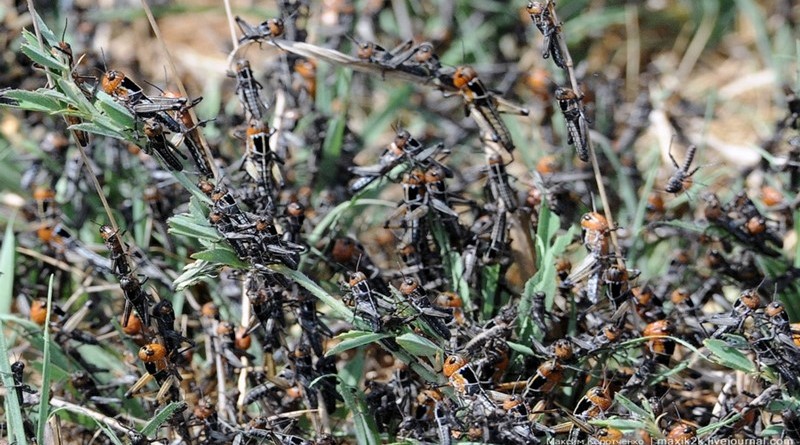Locust invasions: FAO and partners take up the challenge in West Africa
This action plan was implemented jointly with the Commission for the Control of Desert Locusts in the Western Region (CLCPRO) and the FAO Subregional Office for Resilience in West Africa and the Sahel (REWOA)
Since 2018, an unprecedented locust invasion has hit several countries in East Africa. The crisis has hit Sudan, Kenya, Ethiopia and Somalia hard, putting people’s food security at risk. Faced with the devastating consequences of these pests, the FAO Desert Locust Information Service has made forecasts to anticipate a spread of locusts in the western region. This has put on alert the Commission for the Control of Desert Locusts in the Western Region (CLCPRO), which comprises ten countries in West and North-West Africa (Algeria, Burkina Faso, Libya, Mali, Morocco, Mauritania, Niger, Senegal, Chad and Tunisia), to put in place an action plan to deal with a threat that could originate in the Horn of Africa.
This is the first time that an action plan has been put in place to anticipate a locust invasion, where all measures have been taken in time, at the national, regional and international levels,” said Mr. Mohamed Lemine Hamouny, Executive Secretary of CLCPRO. This action plan was implemented jointly with CLCPRO and the FAO Subregional Office for Resilience in West Africa and the Sahel (REWOA),” he continued.
The action plan is articulated in two distinct components. Strengthening of surveillance and control means and human capacity building
The response capacity of national services to locust invasions is very weak, and this varies from one country to another. Yet locusts from the invasion areas need to be located and eliminated as quickly as possible to prevent them from colonising the western region. To facilitate this important mission, a helicopter has been chartered. The helicopter can monitor thousands of kilometres of sensitive borders between Chad and Sudan, a country in the midst of a locust crisis, in record time.
In addition, new equipment such as vehicles, communication tools, camping and treatment materials have been acquired to increase the countries’ surveillance and action capacities. Another important aspect is the transport of pesticides from Morocco to Chad and Niger under the coordination of the CLCPRO, as well as the purchase of bio-pesticides for the treatment of ecologically sensitive areas. We also note the acquisition of drones to improve the intervention capacities of ground teams in difficult-to-reach areas and thus allow more exhaustive surveys.
With regard to human capacity building, practical training sessions have been organised. Thus, the agents involved in the fight in the field were trained in the use of the drone. The latter also benefited from various training sessions preparing them to better respond to a possible locust crisis. Fortunately, the West African region did not experience any major locust infiltration in 2021.
For Ms. Coumba SOW, head of the REOWA resilience team, the implementation of the anticipation action plan has allowed country teams to improve their systems. “It is true that we have not experienced a locust crisis this year, but prevention is better than cure. The cost of an anticipation strategy is much lower than the cost of responding to a locust crisis.
For the FAO and its partners, protecting the food sources of vulnerable populations remains an important priority. The system put in place is a strong response to the threat of locusts, which could be frequent in the region from North Africa or the Middle East. These insects destroy cereal, fruit and vegetable crops as well as pastures, and therefore threaten security in the affected countries.
The increase in locust population density changes their behaviour and stimulates their gregarious instinct: they gather in swarms of billions of individuals. These huge swarms, covering up to several hundred square kilometres, are able to migrate very long distances outside their remission zone to find food.




